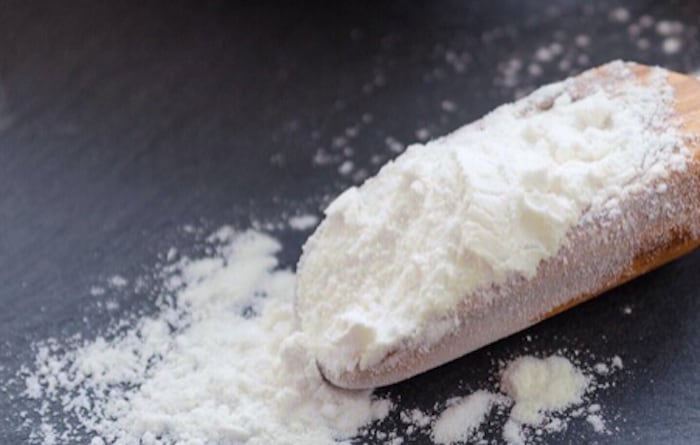The new research was conducted by researchers from the Department of Gastroenterology at Monash University in Melbourne, Australia. The research was published in the journal Gut, which is one of the British Medical Journal publications.
The researchers noted that the amount of data available on different fibers has exploded in recent years. Decades ago it was known that more fiber intake was beneficial in avoiding unpleasant gastrointestinal symptoms, but not much more was understood beyond that.
Exactly how was fiber beneficial? Was it merely a mechanical effect, the old ‘roughage’ idea? Was undigested fiber absorbing toxins for better excretion of them, thus lowering inflammation? Was fiber being fermented, and giving rise to more beneficial microbes and the metabolites they secrete? If so, was it important where in the gut this fermentation took place?
Categorization of fibers
Dietary fibers can be broken down into several categories. One of the most basic is the difference between whole fiber as it is presented in the food matrix itself, and isolated or purified fibers. This first arose from the separation of various cereal grains from their husks giving rise to wheat bran, rice bran and corn bran ingredients.
Later ingredient developers began isolating fiber constituents from these feed stocks. This enabled more precise characterization of the health benefits of these ingredients as well as affording formulation flexibility in a variety of prepared foods and supplements such as meal replacement shakes and nutrition bars.
Fibers can be categorized by the type of monosaccharides from while they’re constructed and number of molecules they contain, called the degree of polymerization (DP). Thus, there are fructo-, xylo- and galactooliogosacchardides (DP 3–9) and polysaccharides (DP ≥10). Polysaccharides include non starch varieties that can’t be digested, and resistant starches (RS).
In recent decades fibers have been also categorized into ‘soluble’ and ‘insoluble’ varieties. While the way these fibers are delineated on food labels in the United States might imply important functional differences in the gut, the researchers said it really has more to do with how the fibers are isolated from their source material and analyzed.
Finally, there are differences among these fibers in the complexity of their molecular structures, which do have profound functional implications. For example, non-viscous cellulose consists of individual units tightly bound to each other, while psyllium fiber is bound is a loose structure. Thus, fermenting bacteria have a much easier time accessing sites on the psyllium molecule to break it down.
Importance of the fiber effects triad
The early ‘roughage’ concept of fiber was not wrong, merely incomplete. The Australian researchers said that fibers have a bulking function, in which the fiber molecules help to retain water in the stool and increase stool weight. But fibers also are important in maintaining the most healthful viscosity of the stool. And the fermentability of fibers has been shown in recent decades to have a host of beneficial microbiome modulation functions.
Putting all that together, the researchers said fibers can be placed along a three-axis graph measuring viscosity, bulking potential and rate of fermentation. Most of the commercially important isolated fibers such as fructans (inulin is an example), GOS, FOS and partially hydrolyzed guar gum (PHGG) fit in the part of the graph where they all have low viscosity and low bulking properties but range from moderate to rapid in terms of their rate of fermentation.
Toward an individualized approach
Just as all of these different fibers have different properties, irritable bowel syndrome (IBS) presents differently in different people, too. While the unifying theme is one of moderate to severe intestinal inflammation, this inflammation can be greater at different points in the digestive tract. And it can be accompanied in varying degree by symptoms such as pain, severe constipation to chronic diarrhea and instances of severe bloating.
Thus, while the recommendation to eat more fiber is commonly given to consumers to preserve their digestive health, for IBS patients the picture is more nuanced.
The researchers said the field of fiber research is approaching the point were individualized fiber therapies might be possible.
“Despite the functional characteristics of dietary fibre, there has been much confusion regarding their value for patients with IBS, stemming partly from their overly simplistic classification, partly from the general lack of consideration of physiological heterogeneity in patients and partly from the limitations of the RCTs conducted to date. By embracing different types of fibre as specific compounds possessing distinct functional characteristics, we have described how distinct physiological responses induced by specific fibres may potentially be exploited by their judicious application in suitable physiological conditions with possible improved clinical outcomes,” the researchers concluded.
More data needed to complete complicated matrix
However, this becomes a complicated game of matching specific fiber properties with outcome targets, such as normalization of bowel habit, bringing about beneficial shifts in the gut microbiome, or finding a way to provide fiber in concert with dietary strategies like the FODMAP diet, in which too low fiber intake is a risk.
“It is clear that applying the heterogeneity of fibres and their effects to a physiologically heterogeneous IBS population is challenging, and it is not surprising that therapeutic studies with the one-size-fits-all approach have had unimpressive results. Individual patient characteristics may need to be included in therapeutic choices of fibre,” the researchers wrote.
“[W]ell-designed dietary trials conducted to evaluate the clinical value of fibre types using endpoints aligned with their functional characteristics are required. Future work to establish physiological measures to predict the likelihood of patients responding effectively to fibre therapies will greatly enhance the ability to personalise selection of the optimal fibre(s),” they added.
GPA: Researchers’ conclusions match industry outlook
Len Monheit, executive director of the Global Prebiotic Association, an industry trade group, welcomed the new research and the authors’ recommendations.
“The Global Prebiotic Association supports the premise that a one-size fits all approach to the utilization of fiber as a strategy for IBS management is not ideal,” Monheit said.
“At the top, there is the phenomenon of responders vs. non-responders. It has also been established that fiber can be an IBS trigger in certain populations of IBS suffers, suggesting a diagnostic and personalization component if this is to be an established or considered course of treatment. We suggest that the terms digestible versus non-digestible as breakouts of fiber types are inadequate and not specific enough to truly advance science and care in this area,” he added.
“As the authors point out and as emerging science supports, there can be a number of therapeutic outcomes modulated by different type of fiber/prebiotic support that can impact short chain fatty acid synthesis differently, and also trigger fermentation at various stages of the gut,” Monheit concluded.
Source: Gut
DOI: 10.1136/gutjnl-2021-324891
Dietary fibres and IBS: translating functional characteristics to clinical value in the era of personalised medicine
Authors: So D, et al.




